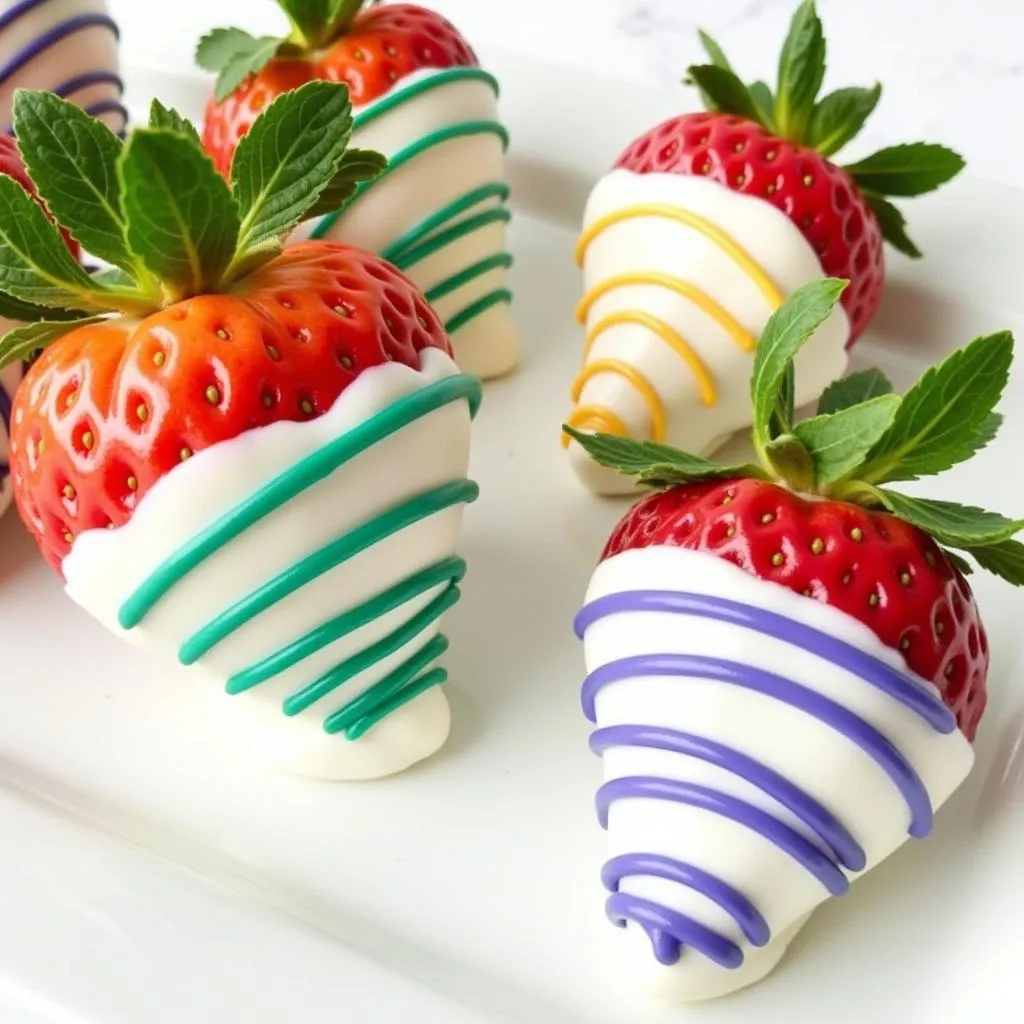White chocolate’s blank canvas allows for endless creativity, especially when it comes to color. Whether you’re looking to create vibrant treats or achieve subtle pastel hues, gel food coloring is the key. This guide will walk you through the simple process of transforming ordinary white chocolate into a spectrum of possibilities using gel food coloring.
Understanding Gel Food Coloring and White Chocolate
Before diving into the how-to, it’s essential to understand why gel food coloring reigns supreme for coloring white chocolate. Unlike liquid food coloring, gel coloring boasts a concentrated pigment that yields vibrant colors without altering the chocolate’s consistency.
White chocolate, known for its delicate flavor and smooth texture, is particularly susceptible to changes in consistency. Adding excess liquid can cause it to seize, resulting in a grainy texture. Gel food coloring eliminates this concern, allowing you to achieve your desired color without compromising the chocolate’s smooth, melt-in-your-mouth quality.
Gathering Your Supplies
Having the right tools at hand will make the coloring process a breeze. Here’s what you’ll need:
- White chocolate (chips, bars, or melting wafers)
- Gel food coloring
- Microwave-safe bowl
- Rubber spatula or spoon
- Parchment paper
- Toothpicks
Step-by-Step Guide to Coloring White Chocolate
Follow these simple steps to achieve perfectly colored white chocolate:
- Melt the White Chocolate: Begin by melting your white chocolate. The microwave is the quickest method, but a double boiler works just as well. If using the microwave, heat in short bursts (20-30 seconds), stirring frequently to prevent burning.
- Divide and Conquer: If you’re aiming for multiple colors, divide the melted white chocolate into separate bowls. This allows for precise color mixing and prevents accidental blending.
- Add the Gel Food Coloring: Start by adding a small amount of gel food coloring to the melted chocolate. Remember, a little goes a long way. Use a toothpick to add the coloring, gradually incorporating more until you achieve your desired shade.
- Mix Thoroughly: Stir the food coloring into the melted chocolate until no streaks remain. The mixture should be a uniform color throughout.
- Test the Color: Before using the colored chocolate, test it on a small piece of parchment paper. This allows you to see the true color after it sets and make any necessary adjustments.
- Get Creative: Once you’re happy with the color, let your creativity run wild! Use the colored chocolate for dipping, drizzling, molding, or creating decorative designs.
 Mixing gel food coloring into melted white chocolate
Mixing gel food coloring into melted white chocolate
Tips and Tricks for Optimal Results
- Start Small: Always add gel food coloring in small increments. It’s easier to darken the color gradually than to lighten it.
- Use High-Quality Chocolate: Opt for high-quality white chocolate that melts smoothly. This will yield the best results in terms of both flavor and texture.
- Avoid Water Contamination: Water is the enemy of melted chocolate. Ensure all your utensils are completely dry to prevent the chocolate from seizing.
- Get Creative with Colors: Don’t be afraid to experiment with different color combinations. Mix and match gel food colorings to create custom shades and achieve unique effects.
- Practice Makes Perfect: Like any culinary skill, coloring white chocolate takes a bit of practice. Don’t be discouraged if your first attempt isn’t flawless. Keep experimenting and have fun with the process.
Frequently Asked Questions
Can I use liquid food coloring to color white chocolate?
While you can technically use liquid food coloring, it’s not recommended. Liquid food coloring can alter the consistency of white chocolate, making it more prone to seizing.
How do I prevent white chocolate from seizing?
The key to preventing white chocolate from seizing is to avoid introducing any moisture. Use dry utensils, melt the chocolate slowly, and stir frequently.
 Assortment of white chocolate dipped strawberries in various colors
Assortment of white chocolate dipped strawberries in various colors
Can I mix different brands of gel food coloring?
Yes, you can generally mix different brands of gel food coloring. However, keep in mind that the color concentration may vary, so it’s always best to test the color before using it on a larger scale.
How do I store colored white chocolate?
Store any leftover colored white chocolate in an airtight container at room temperature. Avoid exposing it to direct sunlight or heat, as this can cause the chocolate to melt or discolor.
Elevate Your Treats with Colorful White Chocolate
Coloring white chocolate with gel food coloring opens up a world of possibilities, allowing you to transform ordinary desserts into stunning works of art. Whether you’re dipping strawberries, drizzling over cakes, or crafting intricate chocolate decorations, mastering this simple technique will elevate your culinary creations to new heights.
Have any more questions about coloring white chocolate or other baking inquiries? Contact us at 0373298888 or [email protected]. Our team of baking enthusiasts is always happy to help you troubleshoot any challenges and provide expert advice. You can also visit our shop at 86 Cầu Giấy, Hà Nội for all your baking needs. Happy coloring!
For more tips on creating vibrant colors with food coloring, check out our guides on how to make maroon frosting with food coloring, how to make dark blue with food coloring, and how to make peach colored frosting. And if you’re feeling adventurous, explore the possibilities of tie-dyeing with food coloring. Don’t forget to browse our guide on how to make brown with gel food coloring for even more color inspiration.

